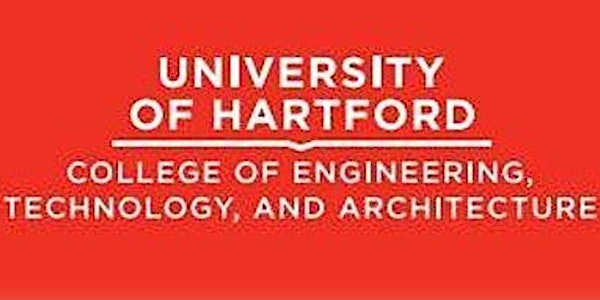
Cohort 3 Fundamentals of CMM
Fundamentals of CMM
Date and time
Location
University of Hartford, College of Engineering, Technology, and Architecture
200 Bloomfield Avenue Dana Hall room 102 West Hartford, CT 06117 United StatesAbout this event
- Event lasts 2 days 9 hours
COURSE SPECIFIC LOGISTICS
COURSE DURATION: Sept 9-11, 2025 Three (3) days per schedule above and what’s posted on Eventbrite website
COURSE HOURS: 8:00 AM – 5:00 PM (Eastern Time, US)
SITE: University of Hartford, College of Engineering, Technology & Architecture
ADDRESS: 200 Bloomfield Ave., West Hartford, CT 06117
ROOM: Metrology Lab, Dana Hall, Room D102
UHART CONTACT: Allison Poulin (860-768-5795, alpoulin@hartford.edu
PWA CONTACTS: Samantha Schadtle, Production Training Manager, Quality Systems
Peter E. Teti, Quality Engineering Fellow (peter.teti@prattwhitney.com)
PWA CONTACT INFO.: Samantha.Schadtle@prattwhitney.com
INSTRUCTOR: Professor Chittaranjan Sahay (860) 768-4852 sahay@hartford.edu,
Prof. Suhash Ghosh (ghosh@hartford.edu)
BREAKFAST/LUNCH: Provided when course is onsite.
COST: $1500 per student
DETAILED AGENDA
Day 1
Introduction to CMM - CMM Basics; How do they work? Safety precautions; Why use a CMM? Quick review of probe heads and probing tech (touch, scan, laser, vision, etc.) ; Cleaning parts, probe tips, etc. ; System boot up procedure ; CMM basics and maintenance ; Understanding manual handboxes
Basic metrology Concepts - What is Metrology and measurement (NPL) ; Importance of measurements ; measurement uncertainty; CMM and Part influences; Environmental conditions; Measurement strategy; Fixturing and Orientation; Traceability; CMM calibration and interim checks; Programmer influences
Understanding CMM Programming - Programming Basics; Cartesian Coordinate System vs. Polar Coordinates; Right hand Rule; Vectors; Degrees of Freedom; Components of a Part Coordinate System (PCS); Primary; Secondary; Tertiary; Translation & Rotation; Alignment vs. Datums vs. PCS; Do all features make good datum features (thin, short, tiny, etc)?; Angles and angular convention
Day 2
Probes & Probe Calibration - A & B Angle Conventions; Explanation of Probe Calibration; Probe Compensation; Assembly of Probes, modules, extension, styli, etc; Size and Form tolerances for calibration; Number of points for probe calibration; Calibration schedule; Cleaning the stylus and other components
Simple Inspection - Measuring 2D & 3D Features; Manual measurement techniques; Proper probing; Location of points; Number of points; Text Prompts; Common mistakes; Measuring small or partial features
Understanding a PCS - Establishing the primary axis first; 3 Plane PCS; Plane Line Point PCS; A refined PCS
Good programming practice - Naming conventions; Features; Probes; Tolerances; Adding user Prompts; Formatting Code; Header; White Space; Comments; Subroutines; Logical grouping / Blocks; Program Header; Program Revision Control
Day 3
In Depth Analysis of Probing - Determining optimal stylus size; Probing direction (normal vs skewed); Determining optimal Touch Velocity; Choosing length of stylus & EW; Stylus materials
How do you know your program is providing correct results? - Determining repeatability of the program; Determining reproducibility; Determining the accuracy of the program; Correlation and acceptance standards; AS9100; ISO; Common Programming and Measurement Pitfalls
Settings - Proper use of CMM settings; Decimal Places; Feature algorithms
How do you know your CMM is providing correct results? - Probe Calibration results; Probe calibration correlation; Errors in probing and length (E0,MPE , PFTU,MPE) ; Advantages of single probe angle vs. multiple probe angles ; B89.4.10360-2 & ISO 10360; Interim checks ; Use of master part ; Use of artifact ; Monitoring/Tracking CMM performance and errors ; Use of temperature compensation ; CMM ; Probing ; Part ; Calibration Sphere certification ; CMM and/or probing warm up
Programming to standards - Are programs written to the standard indicated on the blueprint/cad model? How closely do the programs conform to the standard? ; Providing measurement methodology with results (algorithm, number of points, filters used, etc.)
Final Review